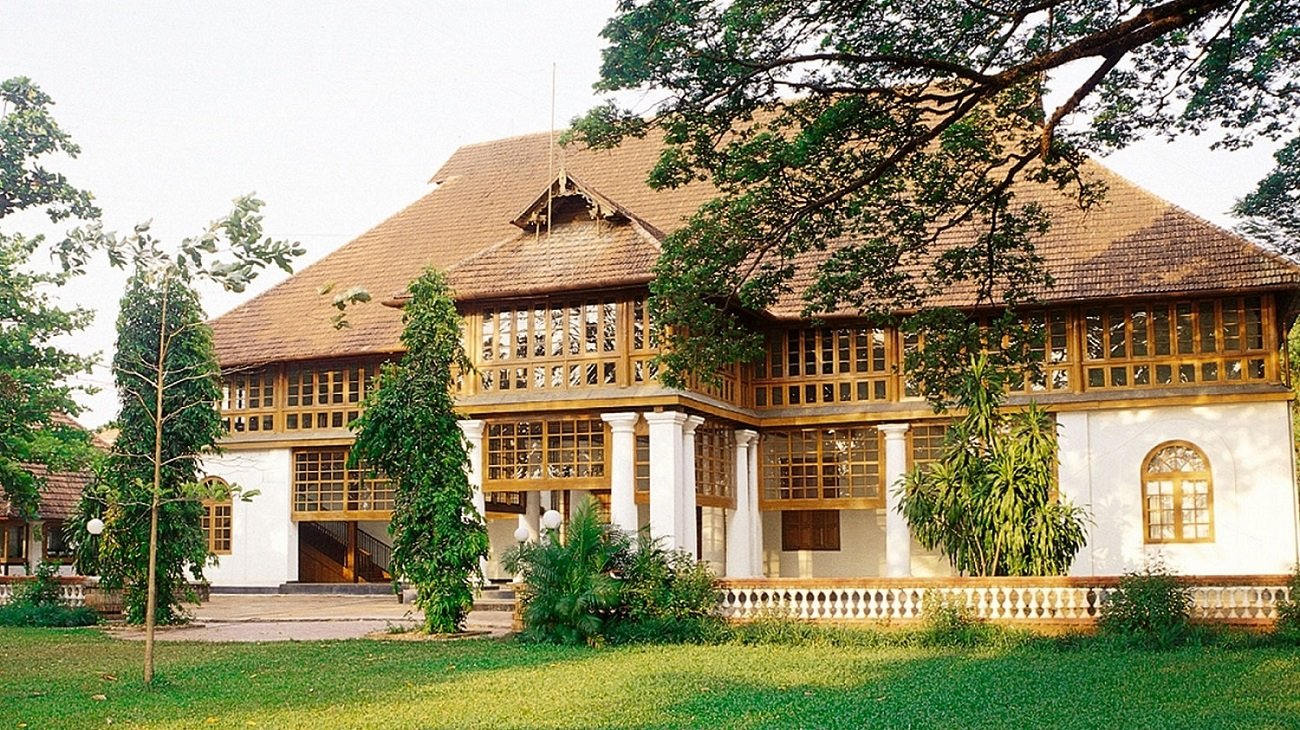#11217. Colonial Nalukettu Facade: A Synthesis of European and Keralan Architecture
This is a magnificent example of Kerala colonial architecture (South India), known as "Nalukettu" – a traditional mansion with an inner courtyard. The facade of the building represents a harmonious combination of European and local architectural elements, which is typical for the heritage of Portuguese and British influence in the region.
The most expressive feature of the facade is the spacious veranda with massive white classical-style columns supporting the second floor. The contrast between the white walls of the first floor and the abundant use of natural wood on the upper level adds particular appeal. The wooden lattice panels (jali) on the second floor serve not only as a decorative element but also as a functional one – providing natural ventilation and shading for the rooms.
The high hipped roof, covered with terracotta tiles, gives the building a majestic appearance and is adapted to the local monsoon climate. A small gable in the center of the roof adds an architectural accent. The white balustrade at the first-floor level elegantly frames the building, adding sophistication to the composition.
In modern facade design, one can borrow elements such as the contrasting combination of materials (white plaster and natural wood), the use of lattice panels to create interplay of light and shadow, as well as spacious covered verandas with columns that create a smooth transition between interior and exterior. These techniques are particularly relevant for tropical and subtropical climates, where natural ventilation and protection from the scorching sun are important.
